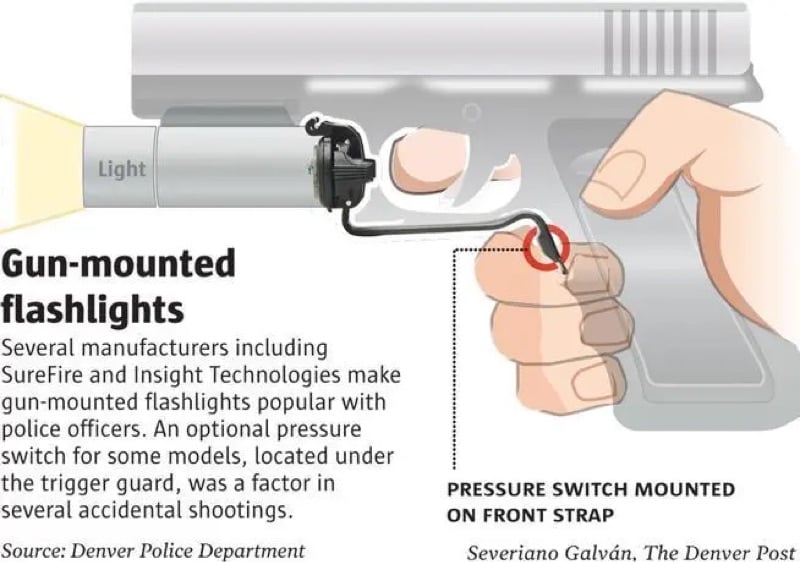The Flashlight Gun Is Peak WTF America
An officer “accidentally” fired his weapon during an NYPD raid on a student-occupied building at Columbia University on Tuesday. Apparently, he mistook his gun for a flashlight. You may be wondering: how could this happen? Well, like this. From a 2014 article in the Denver Post:

Ronny Flanagan took pride in his record as a police officer in Plano, Texas. He had an incident-free career. He took safety training regularly. He was known at the range as a very good shot.
Yet he killed a man when he was simply trying to press a flashlight switch mounted beneath the trigger on his pistol.
In a deposition, Flanagan expressed his remorse and made a prediction.
“I don’t want anyone to ever sit in a chair I’m in right now,” he said. “Think about the officers that aren’t as well trained, officers that don’t take it as seriously, and you put them in a pressure situation, another accident will happen. Not if, but will.”
Jeeeeesus Christ this is the most American shit ever. First of all: guns, guns, guns!! We love ‘em! Don’t forget the complete militarization of the police (they’ve got tanks!), which happens in tinpot countries where leaders fear the citizenry. Those gun flashlights were initially developed for the Navy SEALs and now city cops wield them around students.
And then. And then! There’s the completely genius idea of PUTTING A SECOND TRIGGER ON A GUN — I wish I had letters more uppercase than uppercase for this next part — RIGHT BELOW THE FIRST TRIGGER!!!!!!! 1
You know, the one that propels a projectile out of the weapon at deadly speeds!?
You’re familiar with those doors where the handle makes it seem like a pull but you actually have to push it? They’re called Norman doors, the canonical example of bad design. These flashlight guns are like Norman doors that kill people. W T Actual Fuck. (via @ygalanter.bsky.social)
- I know I’m gonna get email about this so I’ll stop you right there Johnny Gmail: I am sure “not all guns” 🥴 with flashlights are designed like this. I am positive that putting yet another switch on a firearm that’s designed to be used when the gun is pointed at something or someone is a Bad Idea. And anyway, this whole thing about being an “accident” is BS anyway…there is nothing accidental about where that officer was with the gear that he had, doing what he was doing. It is all perfectly predictable that guns are fired by militarized police in Gun Land USA.↩





Stay Connected